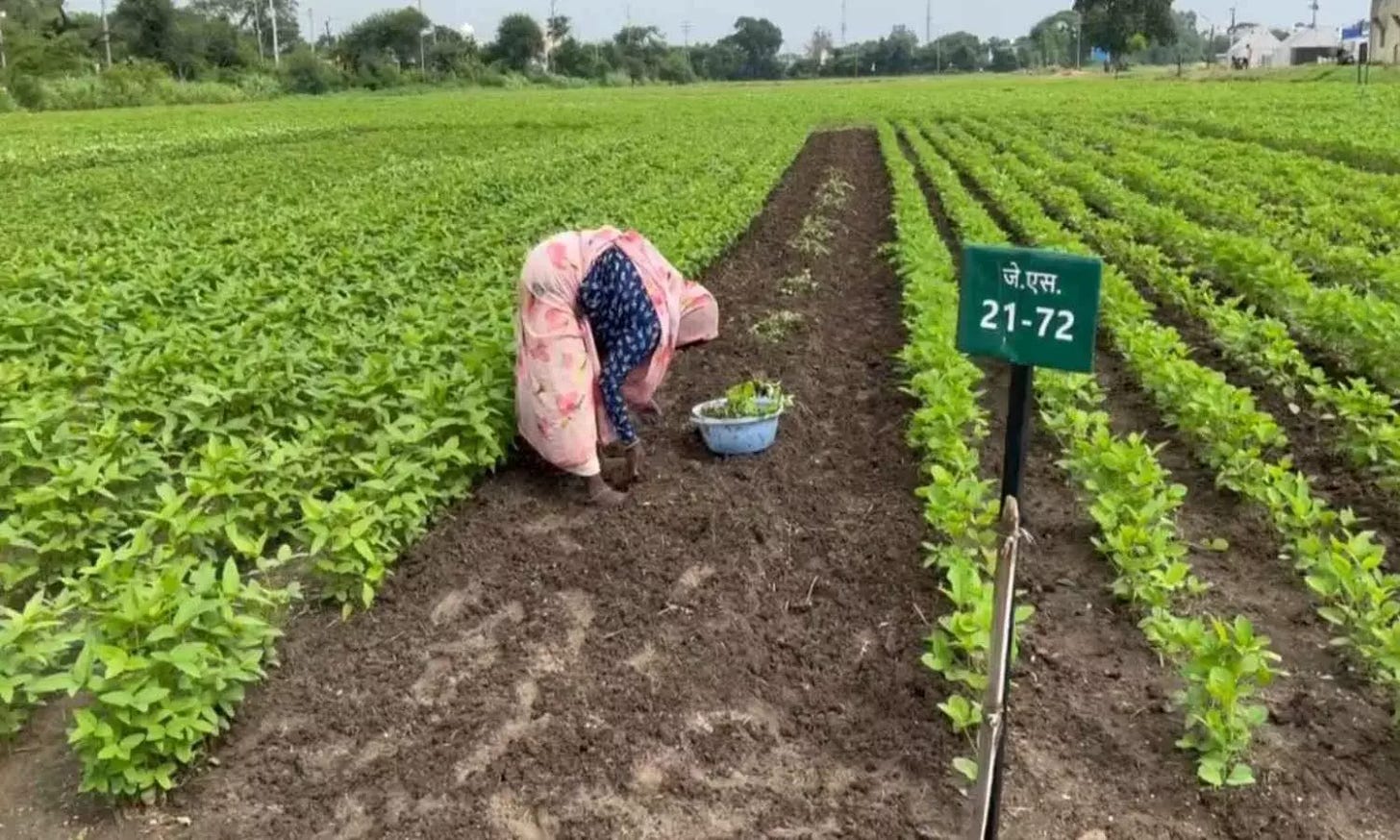Crisis in the Commons
This week, public smoking bans at 25, India's sewage crisis, the way ahead on fertiliser subsidies, the new paddy cultivation formula, and more
This week’s newsletter uncovers the intricate challenges threatening India’s sustainability and public welfare, from public health to environmental resilience and agricultural policy.
Despite a 25-year public smoking ban, inconsistent enforcement and tobacco’s grip fuel a health crisis costing 1.3 million lives yearly. Meanwhile, India’s sewage crisis—treating only 28% of 72,000 million litres daily—pollutes rivers, worsening water scarcity and disease. The Rs 1.7 lakh crore fertiliser subsidy, while vital for food security, entrenches import reliance and soil degradation, demanding farmer-focused reforms. Similarly, a bold plan to shift 5 million hectares from paddy to pulses and oilseeds risks faltering without guaranteed procurement and support. In the Himalayas, climate change threatens traditional gharats, eco-friendly watermills that could power rural communities if revived.
Taken together, the week's stories highlight the urgent need for cohesive policies to balance tradition, innovation, and sustainability.
India’s 25-Year Public Smoking Ban: Enforcement Gaps Persist
This year marks the 25th anniversary of India’s public smoking ban, first sparked by a landmark Kerala High Court ruling, followed by the Cigarettes and Other Tobacco Products Act (COTPA) in 2003.
Despite this, India remains the world’s second-largest tobacco consumer, with 253 million users in 2022, per recent estimates. The Global Adult Tobacco Survey (2016-17) reported 267 million adult users, but outdated data hampers precise tracking. Enforcement of COTPA varies widely, with states like Punjab showing progress through coordinated efforts, while others lag due to limited funding and training. Thus, despite the official ban, tobacco causes 1.28 million deaths annually in India, with economic costs of Rs 1.7 trillion in 2017-18.
Experts call for stronger cessation programs, updated warning labels, and higher taxes to curb use. Community-based screening and tech-driven interventions could further reduce tobacco’s burden, particularly in rural areas. Ahead of World No-Tobacco Day to be observed on May 31, Nidhi Kadere reports.
India’s Sewage Crisis Threatens Rivers and Public Health
India generates 72,368 million litres of sewage daily, enough to fill 30,000 Olympic-size swimming pools, but treats only 28% due to limited capacity and outdated infrastructure.
Sewage treatment plants (STPs) struggle with monsoons, power cuts, and the inability to filter heavy metals or pharmaceutical contaminants, leading to severe river pollution. The Central Pollution Control Board (2018) found 13% of 351 river stretches highly polluted, with urban sewage as the primary culprit.
Contaminated water contributes to 21% of communicable diseases, causing 1.7 million global deaths annually. By 2050, wastewater could rise 80%, overwhelming existing systems. The Ganga and Yamuna rivers, critical for millions, show alarming pollution levels, with faecal coliform far exceeding safe limits during events like the 2025 Kumbh Mela. Experts urge decentralised, nature-based treatment systems to address local needs, reduce pollution, and mitigate India’s growing water stress. Dimple Behal and Chirag Patel report.
India’s Fertiliser Subsidy: High Costs, Low Efficiency
India’s 2025-26 budget allocates Rs 1.67 lakh crore for fertiliser subsidies. That is nearly 70% of the agriculture budget, and yet inefficiencies persist.
Subsidies, covering 82% of the 45 million tonnes needed for 300 million tonnes of foodgrains, ensure affordability but fail to boost production efficiency or private investment. Heavy reliance on imported raw materials—100% for natural gas, 90% for potash—drives up costs, with subsidies rising 131.3% from 2017-18 to 2021-22 despite only 16.2% higher consumption.
Opaque accounting, delayed payments, and special securities further inflate hidden costs. Chemical fertilisers harm soil health, countering natural farming goals, while organic fertiliser support remains minimal at Rs 150 crore. Experts advocate direct cash transfers to farmers to encourage sustainable practices and reduce import dependency. Transparent accounting and fiscal reforms are critical to align subsidies with environmental and agricultural goals. Research analyst Radha Malani reports.
India’s Plan to Shift from Paddy to Pulses and Oilseeds Faces Hurdles
The Indian Council of Agricultural Research’s May 2025 meeting saw Union Agriculture Minister Shivraj Singh Chauhan propose a ‘Minus 5, Plus 10’ formula, aiming to reduce paddy cultivation by 5 million hectares while increasing its output by 10 million tonnes through genome-edited varieties. This would free land for pulses and oilseeds, reducing India’s import dependence as the world’s largest edible oil importer and second-largest pulse consumer.
However, farmers and traders express concerns over feasibility. Paddy dominates at 138 million tonnes of India’s 332 million tonne foodgrain production (2023-24), driven by assured MSP procurement, especially in Punjab and Haryana. Pulses and oilseeds lack similar support, with minimal MSP purchases and prices often below MSP, deterring farmers. Experts suggest direct subsidies, better seeds, and training to incentivize crop diversification, warning of potential rice shortages and price spikes without proper implementation. For IndiaSpend Hindi, Mithilesh Dhar Dubey reports from Lucknow.
Himalayan Gharats: A Fading Sustainable Legacy
In the Western Himalayas, traditional water-powered gharats (watermills) are more than just grain-grinding tools; they are vital to local livelihoods and culture. In villages like Ludera in Himachal Pradesh’s Chamba district, gharats, powered by glacier-fed streams like Jahouli Khadd, once sustained self-reliant economies.
However, climate change has reduced water flow, with Himachal’s glaciers shrinking 1.678% annually (1994-2021), threatening these eco-friendly systems. Gharats, capable of saving 1.3–2.6 MW of energy monthly, could serve as micro-hydropower sources, yet lack government support or technical upgrades. In Ludera, only three of six gharats remain, unsupported by initiatives like HIMURJA’s stalled schemes.
Experts urge policy focus on reviving gharats as sustainable energy models, emphasizing local training, subsidies, and water conservation to preserve this cultural and environmental heritage, which also fosters community bonds and oral traditions. Surindra Kumar reports for IndiaSpend Hindi.
That is it from us for this week. Oh, and do note that India is currently witnessing a mild resurgence of Covid, primarily attributed to the JN.1 variant which is a sublineage of Omicron. As of the time of writing this, 266 active cases are reported nationwide -- not enough to ring alarm bells, but enough to suggest that taking basic precautions is prudent. Take care, all, and stay safe.








There is a strong need for public awareness. It is not enough to know. It is needed to act. Why action is missing? Are we so individualistic? No. But why we are not acting on it?